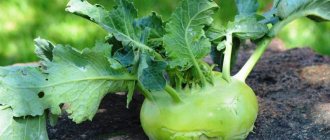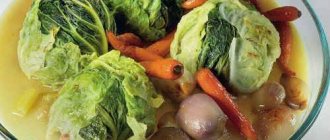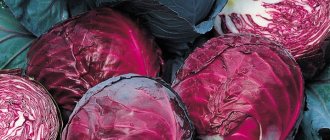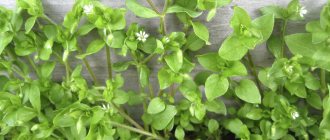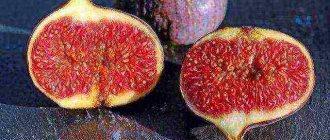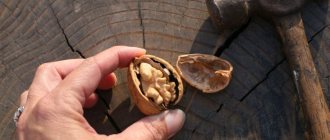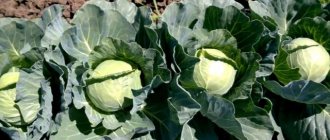Savoy cabbage is gradually taking its place in the vegetable niche of gardeners in our country. With its unusual appearance and amazing taste, it has become a favorite among many summer residents. Unfortunately, the stereotypical opinion about the capriciousness of the vegetable can only be dispelled by direct cultivation. What are the features of Savoy cabbage and whether it is worth taking up space on your plot in the article.
Seeds of one of the most common varieties - “Golden Early”
Savoy cabbage looks very beautiful in the garden
Cabbage of savoy cabbage
Savoy cabbage does not emit a specific odor during heat treatment, and when finished it turns out much more tender than ordinary white cabbage.
What is special about Savoy cabbage?
Savoy cabbage has a very beautiful appearance, resembling a wonderful flower from afar. Its head is formed from delicate green corrugated leaves so that the overall density remains weak and can be easily disassembled into its component parts.
This cabbage also differs from white cabbage in that it does not emit a specific odor when treated with temperature. Dishes made from it have a special taste, and the finished consistency is more delicate.
The vegetable from Savoy is distinguished by the fact that early varieties cannot be stored for a long time, and cabbage is not suitable for making pickles and winter preparations, as well as pickling. This is truly a seasonal vegetable crop.
Reviews of savoy cabbage
Reviews from people who have tried or grown Savoy cabbage are positive. This variety has many advantages over the usual white cabbage.
Irina, Voronezh: “I’ve been growing Savoy cabbage for three years now. It almost completely replaced the white cabbage for me. It is easy to grow. The main thing is to water and feed in a timely manner. At the same time, the taste is much more delicate, all dishes turn out tastier. Not suitable for fermentation only. In winter, I store it directly in the beds under snow or snobon. It doesn't affect the taste."
Alisa, Zelenograd: “I buy Savoy cabbage in the store instead of white cabbage. I love her very much. The vegetable is delicious both fresh and stewed with cheese and cream. I love making cabbage rolls and pies from it. It turns out more beautiful and tender than regular one. In addition, it has more beneficial properties.”
Origin story
Savoy cabbage comes from the Mediterranean. North Africa is where it grows most wildly, and the Italians made Savoy cabbage a domestic vegetable crop. They were the first to grow it in the Principality of Savoy more than five centuries ago. This is where the name cabbage comes from.
At first, there was an opinion that Savoy cabbage was food for the poor, but later its taste was appreciated by people of nobility.
In the 18th century, this type of cabbage was called “Milanese”, “Lombard” or “Italian”. Now Czechs and Poles call this variety French, because Savoy was conquered by Napoleon and belongs to France. In Eastern European countries, Savoy cabbage has its own special name - “lace” or “lacemaker”.
In our country, the Savoy vegetable crop is very rare, most likely due to the erroneous opinion about increased requirements for growing conditions. Nevertheless, gradually, thanks to the fashion for PP and new products, Savoy cabbage is gaining attention and receiving love from the first try.
Use for weight loss
Low-calorie savoy cabbage is actively used in dietetics. It belongs to the category of products for the digestion of which the body spends more energy than it receives directly during consumption. The vegetable does not lead to weight gain, but accelerates the elimination of toxins and cleanses the intestines and liver.
You can eat the product fresh on a diet as part of salads. Savoy cabbage is also combined with chicken and lean fish. It is useful to drink a small amount of freshly squeezed vegetable juice before each meal - it improves the absorption of nutrients supplied with food. However, it is recommended to consume no more than 200 g of cabbage leaves per day, otherwise the product may harm the body.
Botanical description
Savoy cabbage belongs to the Cruciferous family. The structure is similar to white cabbage: it has a branched root system, a tall spindle-shaped stem, on which wide leaves with barely noticeable veins are formed, framing the head.
The color of the leaves depends on the cabbage variety. It can be of various green shades, with or without a white coating. In appearance, the leaves resemble corrugated paper and have an exquisitely crumpled appearance.
The head is loose, weighing from 0.5 to 3 kg. When cut, you can see that the upper leaves are emerald green, and towards the stalk they gradually acquire more and more yellow shades.
In the second year, Savoy cabbage lengthens its stem and white-yellow flowers appear. A pod fruit is formed, which contains 4 round brown-black seeds. The sowing value of seeds is maintained for 4 years.
What does savoy cabbage look like?
The healthy vegetable belongs to biennials from the cruciferous, or cabbage, family. The plant is native to the Mediterranean and is regionalized in Europe. Savoy cabbage has been cultivated in Russia since the 19th century.
According to the description, Savoy cabbage is a subspecies of white cabbage. The shape of the heads of cabbage, which are located on a powerful stem, is cone-shaped or round. Leaf varieties are also cultivated.
The culture has thin lacy leaves and no hard veins. The color of the corrugated foliage ranges from pale green to intense emerald. Loose forks can be easily disassembled into sheets. They are thicker on top and colored green. In the middle the heads of cabbage turn yellow. The variety affects the weight of the heads, which ranges from 500 g to 3 kg.
The size of the heads of cabbage depends on the timing of ripening. The later the vegetables are harvested, the more forks.
The plant is characterized by high frost resistance. Seedlings are not afraid of frost down to -4 °C. Grown and strengthened seedlings can withstand temperatures down to -7 °C. Even under the snow, adults do not die.
The advantages of the Savoy variety include drought resistance and unpretentiousness. The culture can grow on loam, peat and saline soil. The plant has high natural immunity. It is rarely affected by plant diseases and pests. The vegetable feels great not only in the southern Russian regions. It is cultivated with success in the middle zone, the Urals and Siberia. Among the shortcomings are noted:
- limited shelf life after cutting;
- unsuitable for pickling and pickling;
- low yield of Savoy cabbage;
- cracking when overripe.
The name of the vegetable comes from the county of Savoy, where the subspecies was actively cultivated.
Taste and application
The Savoy variety is used in cooking. The taste is not inferior to white cabbage. It doesn't taste bitter. Non-rigid sheets with a delicate aroma are perfect for cabbage rolls and salads. The vegetable is suitable for stewing, as a filling for baking and preparing cabbage soup, soups, and stews.
Savoy is a good addition to red fish, rice and other vegetables. To emphasize the taste, ginger, juniper berries, wine vinegar or balmik are added to the dish. Sesame and anise seeds along with marjoram, garlic and basil will add originality to the dish.
Heads of cabbage are not suitable for pickling and fermenting. In brine they become soft, do not crisp, and their taste deteriorates. Cooking Savoy cabbage requires following the following rules:
- The heat treatment of the vegetable is reduced by 5–10 minutes when compared with the white cabbage variety.
- Foliage is characterized by quick soaking in vegetable oil or sauce. Seasoning is used in moderation when dressing salad or frying cabbage. Otherwise the taste will deteriorate.
- It doesn’t hurt to soak the Savoy cabbage for 2 minutes before frying. in boiling water to avoid dryness and hardness of the product.
- During cooking, it is advisable to spray the vegetable with vinegar: Savoy will not turn into a tasteless mess when stewing.
- When you are about to cook the soup, place the cabbage in cold water for a few minutes.
Advantages and disadvantages of growing
Cultivation of Savoy cabbage has characteristic advantages and disadvantages.
Advantages of growing:
- the use of special knowledge is not required to obtain a harvest;
- unpretentious crop in terms of growing conditions;
- frost resistance;
- disease resistance;
- tolerates drought.
Disadvantages of growing include:
- each plant occupies a large area;
- small or medium sized heads;
- tends to crack when overripe;
- the harvest quickly deteriorates.
Chemical composition and calorie content
Photos of Savoy cabbage and its benefits arouse interest due to the chemical composition of the product. Fresh leaves contain:
- calcium and iron;
- vitamins E and A;
- ascorbic acid;
- beta-carotene;
- antioxidant glutathione;
- cellulose;
- pectins;
- thiamine;
- vitamins B1, B2 and B6;
- potassium, phosphorus and sodium;
- amino acids;
- vitamin PP;
- iodine, magnesium and fluorine;
- phytoncides and mustard oils;
- natural sugars.
The nutritional value of cabbage remains low - only 28 calories per 100 g of product.
Application, composition, benefits and harm
Savoy cabbage is used in salads, and is also subjected to heat treatment during the preparation of all kinds of soups, cutlets, stews and baking fillings.
The benefits of this vegetable crop are explained by its rich vitamin content, the presence of minerals and mineral salts. Regular consumption of Savoy cabbage improves the body's overall immunity, strengthens the heart and blood vessels, restores and stabilizes the nervous system and has a positive effect on the body's circulatory system.
A large amount of fiber in the composition helps satisfy hunger and normalize the functioning of the gastrointestinal tract. This property is especially relevant when losing weight and maintaining proper nutrition.
Among the beneficial properties of savoy cabbage, cancer prevention deserves special attention.
You should not eat dishes from this vegetable crop after abdominal surgical interventions of the peritoneum and sternum. It is contraindicated for problems with the gastrointestinal tract and abnormalities in the thyroid gland.
Application
In cooking
Widely used in cooking for preparing various fresh salads. It is used to prepare cabbage rolls, soups, or simply stewed with tomato or sour cream. Because of its tenderness, Savoy cabbage is completely unsuitable for preservation.
In medicine
Savoy cabbage is used to treat dysbiosis, swelling, hypertension, intestinal inflammation, problems with the spleen and liver. It is an integral part of the diet of people with diabetes. Recommended for stomach diseases and frequent constipation. The juice helps in the fight against vitamin deficiency. Fresh leaves are used for burns, eczema, shingles, and juice compresses promote wound healing. Leaves are applied to muscle tightness, hematomas, and tumors at night. Fresh juice helps with periodontal disease, sore throat and stomatitis.
When losing weight
It has a diuretic effect and helps in the fight against excess weight. Some of the substances in the composition help burn fat deposits. Fiber promotes quick saturation for a long time.
In cosmetology
In cosmetology, juice and pulp from fresh leaves of Savoy cabbage are used. Thanks to its antioxidants, it is included in recipes for rejuvenating and toning masks and other products. Suitable for problem skin prone to oiliness. Helps fight cracks and swelling.
Description of common varieties
The entire varietal and hybrid variety of Savoy cabbage is divided according to the duration of the period from the first active shoots to the vegetative maturity of the heads into:
- early ripening - up to 120 days;
- mid-season - up to 135 days;
- late - from 135 days.
Let's look at some of the most common varieties and their characteristics.
| Variety name | Ripeness | Head weight, kg | Peculiarities |
| Viennese early | early | up to 1.2 | disease resistant |
| Golden early | early, up to 95 days | 0,8 |
|
| Comparsa | early, up to 80 | 0,8 |
|
| Mira | early | up to 1.5 | heads do not crack |
| Anniversary | early, up to 102 days | up to 0.8 |
|
| Melissa | average | up to 3 kg |
|
| Sphere | average | up to 2.5 |
|
| Alaska | late | up to 2.4 |
|
| Stilon | late | up to 2.6 | withstands temperatures down to -6 °C |
| Uralochka | late | up to 2.3 |
|
Early ripening varieties and hybrids
Golden early
Savoy cabbage variety Golden early
Fruitful cabbage of Czech selection ripens early - harvesting begins 105–110 days after full germination. The round, concave, bluish-green leaves form a semi-raised rosette. The leaf plate is corrugated, with noticeable bubbles. Medium-density round heads of cabbage are partially covered with outer leaves. Weight 0.7–0.8 kg.
The forks are not prone to cracking, and the plantings withstand cold weather and drought. Yields of early products are good and amount to 28–34 kg per 10 sq. m.
Moscow lacemaker
The advantages of this wonderful domestic variety are the excellent presentation of one-dimensional beautiful forks and resistance to disease. The harvest is suitable for harvesting at 90–95 days. The leaves are medium-sized, light green, broadly oval, with a bubbly surface.
The heads of cabbage are rounded and flattened, partly covered with leaves, of moderate density, with a small stalk. The internal texture of the forks is delicate, yellowish in color with a pleasant sweetish taste. Weight 1–1.2 kg. Plants are immune to infection, in particular to fusarium and bacteriosis. Harvests reach 40 kg per 10 square meters. m.
Petrovna
The harvested cabbage has excellent taste and ripens 105–110 days after germination; it is unpretentious and resistant to cold. Large rounded leaves of dark green color are characterized by a moderate bluish bloom, noticeable bubbly and folding, and form a wide horizontal rosette.
The forks are round, of moderately dense structure, partially covered with leaves and set low on a short outer stalk. When cut, the head is yellowish-cream, the tender inner leaves are tasty and soft. Weight 1.2 kg. The yields of this reliable, unpretentious variety are constant and amount to up to 45 kg per 10 sq. m.
Growing Savoy cabbage through seedlings
The most common method of harvesting Savoy cabbage is seedling cultivation. This allows the heads to ripen two weeks earlier than when planted by seed. In addition, productivity increases by 30-40%.
When to sow seedlings?
The time interval for sowing directly depends on the variety of cabbage:
- Sow varieties of early ripeness with the arrival of spring;
- medium ripening varieties - from the last ten days of March;
- late varieties - from the beginning of April.
Keep in mind that it will take an average of 35-45 days to form full-fledged seedlings ready for planting.
Soil for growing seedlings
You don’t have to buy store-bought soil to sow seeds. Although such soil will be disinfected and contain a good composition. You can prepare the planting mixture yourself. Take a bucket of soil from the garden, add 2.5-3 kg of rotted manure or composted organic matter to it. Or mix:
- 5 parts peat or garden soil;
- 1 part humus;
- 1 part river sand;
- 0.5 parts wood ash.
Calcine the self-prepared soil mixture in the oven for half an hour at a temperature of 150-180 °C. A week or two before sowing, pour boiling water or a weak aqueous solution of manganese over the mixture.
Read more about how to disinfect the soil yourself before planting seedlings in another article.
Pre-sowing seed treatment
Most often, packaged seeds from reliable suppliers that you purchase in stores are already disinfected and treated with germination activating agents. Therefore, they are covered with a green or other color composition. But, if this is not the case, or the seed material came to you from neighbors or friends, you need to carry out pre-sowing treatment.
To prevent the seeds from being a source of fungal diseases, soak them in a weak solution of manganese for 15-20 minutes. This time is enough, so there is no need to increase the duration. This can lead to chemical burns and complete damage to the seed material.
You can harden seeds with heat and cold. The first option involves warming the seeds near heating devices for 2 days, and the second involves placing the planting material in a place where the air temperature is from 1 to 4 °C (refrigerator, cellar, balcony, etc.). Or soak the seeds in water at 2 degrees Celsius for 24 hours.
After completing the activities, dry the seeds to make it more convenient to use them during planting.
Sowing seeds for seedlings
The seed material of the lace plant is sown in a common container or in separate cups. Give preference to peat tablets or pots, then when working on transferring seedlings to the garden you will not need to remove the roots, which means they will not be injured, and adaptation will take place without complications.
Place a drainage layer on the bottom of the container, filling it with planting mixture. Water the soil with water and make rows 1 cm deep. Leave a gap between the grooves of about 3-3.5 cm. Spread the seeds with a gap of 1.1-2 cm between them, and cover with soil. Carry out watering procedures.
Cover the crops with film or glass and place in a warm place. Daily ventilation and moistening of the soil will make it easier for young shoots to germinate. As soon as the seeds begin to sprout, remove the cover and place the seedlings in a place with a temperature of about 8 degrees, inaccessible to direct sunlight. Reduce the amount of soil moisture.
Conditions and care of crops
Taking care of seedlings and creating a favorable microclimate will guarantee large heads of Savoy cabbage in the future.
For immature seedlings, a daylight period of at least 14 hours is vital, so in the absence of sun on a rainy or cloudy day, as well as due to the peculiarities of the region, use lamps or other additional light equipment. Keep the temperature of the seedlings within 15-17 ° C during the day and about 10 degrees at night.
It is recommended to water the beds with water whose temperature is as close as possible to the soil temperature. Do not over-moisten or over-dry the soil. After moistening the soil, loosen it, which will prevent the formation of a dense crust on the surface, allow moisture to remain inside the soil longer and prevent the occurrence of rot.
To strengthen the immunity of seedlings, stimulate growth and vegetation, apply fertilizers:
- The first feeding is 4-5 days after the dive. Dissolve 10 g of ammonium nitrate or urea and 20 g of superphosphate in 5 liters of water. The feeding consumption rate is 1-2 tbsp. l. under a bush
- The second feeding of seedlings is carried out 12-15 days after diving. The composition of the solution remains the same, but double the concentration of fertilizers.
- A few days before transplanting young seedlings, feed them by mixing: water - 5 l;
- potassium salt - 40 g;
- superphosphate - 25 g;
- ammonium nitrate - 15 g.
Before applying nutrition, moisten the soil so that fertilizing does not burn the root system.
10-14 days before transplanting the seedlings into open ground, begin hardening the cabbage. To do this, gradually reduce the temperature in the room where the seedlings are located. First, leave the windows open, then place the plants on the balcony during the day, and then leave them overnight.
The main thing is to harden off gradually so that the plants do not die from the cold. A couple of days before planting, leave the pots with seedlings outside, while reducing watering, but make sure that the soil does not become too dry.
Picking individual pots
When densely planting young seedlings, it is necessary to carry out a diving procedure. This is planting each plant in separate larger containers so that the seedlings have enough nutrition, space for development and subsequent preparation for transfer to open ground.
Diving is carried out 7-10 days after the appearance of active shoots, when cotyledon leaves develop. Water the seedlings so as not to damage them when removed from the soil. Before transplanting, shorten the roots by a third of their length. This will stimulate the growth of the root system and the plants will more quickly take root in the garden.
Upon completion of the dive, for the first few days, place the seedlings away from direct sunlight. Keep it warm (about 17-19 °C). After 4-5 days, the temperature can be lowered to 13-15 °C.
LiveInternetLiveInternet
Savoy cabbage (Brasska sabauda Lizg) is still rare here, but in Western Europe, due to its high nutritional properties, it has long been in great demand. And there is a reason for this: it is rich in easily digestible proteins, vitamins (carotene, B, C, PP), mustard oil, phytoncides and other biologically active substances, mineral salts of sodium, potassium, magnesium, calcium and phosphorus, and therefore is considered a dietary product and especially necessary for children and elderly people. At first glance, savoy cabbage looks like white cabbage, only its leaves are wrinkled. These tender, blistered, corrugated leaves cause the head to be loose. It can be round, oval, cone-shaped or flat, and in color - pale green, whitish-cream and yellowish. Savoy is the most cold-resistant and frost-resistant of all cabbages. Late-ripening varieties can withstand frosts up to 8°, but in terms of yield it is somewhat inferior to white cabbage. And it easily tolerates drought, although it is a big “water breader”. It grows well on fertile soils, and mid- and late-ripening varieties are more demanding in terms of nutrition than early-ripening varieties. And since Savoy cabbage consumes more nitrogen, phosphorus and potassium than cabbage cabbage, it is responsive to organic matter and high doses of potassium (on peaty floodplain soils) and phosphorus (on heavy loam) fertilizers. Gives good harvests in the Non-Black Earth Region: early-ripening varieties - up to 4 kg, late-ripening - up to 6 kg per 1 sq.m. If you plant varieties and hybrids of different ripening periods, then fresh forks can be cut from mid-July to the end of October. In Russia, the most common varieties and hybrids are included in the State Register. Domestic: Vertu 1340 is a medium-late variety, ready for harvesting 110 days after planting the seedlings (the usual age of seedlings is 40-45 days). Good for autumn and winter consumption. Keeping quality is average. The heads of cabbage are flat, loose, weighing up to 2 kg. Yubileinaya 2170 is an early ripening variety, harvested on the 65th day after planting the seedlings, with finely blistered grayish-green leaves and a medium-dense small head of cabbage. Prone to cracking, and in the north-west - to blooming. Foreign: Golden Early - an early ripening variety. The leaves are strongly corrugated, dark green, the head of cabbage is medium-sized, round, of medium density, weighing up to 1 kg, resistant to cracking. Ft Sfera is a mid-season hybrid, ripens 80 days after planting the seedlings, the leaves are dark green, corrugated and moderately bubbly, the head is round, weighing up to 2.5 kg. Average yield up to 10 kg per 1 sq.m., resistant to cracking. F1 Kroma is a mid-season hybrid. The leaf is green and wavy. The head of cabbage is dense, round, weighing up to 2 kg, with a small stump. The taste is excellent, suitable for long-term storage. F1 Melissa is a mid-season hybrid. The leaf is strongly bubbly, medium corrugated, dark green. The head of cabbage is round-flat, tasty, weighing up to 3 kg. It has stable yields and is resistant to Fusarium wilt and cracking. AGRICULTURAL TECHNIQUES of Savoy cabbage is almost the same as that of white cabbage, but it is better to place it in places with low relief (floodplain) on loamy and peaty soils after legumes, potatoes, cucumbers, onions, perennial grasses, beets and, last but not least, tomatoes. Since savoy cabbage is often affected by clubroot, it is necessary to observe crop rotation and return it to the place where cabbage crops were cultivated no earlier than after five years. The soil, as usual, is prepared in the fall. After harvesting the previous crop, the soil is loosened shallowly to stimulate the growth of weeds. When they sprout, after about two weeks the area is dug up using a shovel and at the same time manure or compost is covered (3-5 kg per 1 sq.m). In spring, it is important to prevent loss of moisture, and as soon as the soil dries, it is slightly loosened. Savoy cabbage is grown through seedlings. Early ripening varieties are sown in the first half of March in order to cut them at the beginning of summer, and seedlings are sown around April 10 for food and storage in the autumn-winter. Young plants are watered moderately, after which they must be ventilated and, in sunny weather, shaded. The temperature and humidity should be low, otherwise the seedlings will become pampered. Seedlings of early varieties and hybrids are planted in open ground in late April - early May, and mid- and late-ripening ones - in the second ten days of May. Depending on the characteristics of the site, you can place cabbage on a flat surface, ridges or ridges. About a week before planting in a permanent place, stop watering the seedlings. On the day of planting, weak and damaged plants are discarded, healthy ones (good seedlings at the age of 45 days should have 4-5 true leaves) are watered abundantly, dug up with a scoop so as to preserve the root system, and carefully selected. Early ripening varieties are planted according to a 60×40 or 70×35 cm pattern; middle and late - 70×60 or 70×50 cm (2.5-4 pieces per 1 sq.m.). If the seedlings are planted very early, they are covered with film, non-woven material or protective caps to protect them from low temperatures. After a week, the plantings are inspected. During the growing season, cabbage is loosened at least 6-8 times: the first time - to a depth of 5-8 cm, immediately after planting. Light soils are cultivated shallowly, heavy soils - deeper. The depth of subsequent loosening is increased, but near the plant itself, so as not to damage the roots, loosen finely. After three weeks, the cabbage is hilled; repeat this technique before closing the rows. Water several times during the summer, depending on the weather. Savoy cabbage grows well only if it is provided with sufficient nutrition. Therefore, already a week and a half after planting, fertilizing is needed: 25 g of ammonium sulfate and superphosphate and 30 g of potassium sulfate are diluted in 10 liters of water. A liter of solution is poured into the groove around each plant, then the grooves are covered with earth. The second feeding with mullein infusion (1:5) and superphosphate (25 g per 10 l) is carried out two to three weeks after the first. Early varieties are harvested when the heads of cabbage gain a weight of 400-600 g and acquire the color characteristic of the variety. If you are late, the forks will crack. Early varieties of cabbage are not suitable for long-term storage. Late-ripening varieties and hybrids are cut when the heads of cabbage weigh 2-3 kg. But there is no need to rush, as lower autumn temperatures will only improve the taste. To protect the forks from damage and contamination, when cutting, be sure to leave two or three top green leaves and place them in the basement on racks in one layer. At a temperature of 1-3°, forks can be stored for about three months. Late-ripening cabbage can be left to winter under a layer of snow. In January-February, you need to clear away the snow, cut down a head of cabbage and, before using it, immerse it in cold water for a few minutes. TO GET your seeds, healthy, typical mother plants for the variety are selected. Before the onset of stable frosts, they are dug up along with the roots, the lower leaves are removed, leaving 3-4 leaves adjacent to the head of cabbage, and placed in the cellar so that the roots are located in specially dug grooves. Then the roots are tightly covered with dry soil. The keeping quality of queen cells is low, so cabbage is placed in low stacks or in one row. In winter, plants are inspected from time to time and rotten leaves are removed. A week before planting, the heads of cabbage from the queen plants are cut into a cone. Stumps are planted in the ground at the end of April - beginning of May according to a 70x50 cm pattern, making sure to isolate the seed plants so that they do not cross-pollinate. Caring for the seeds is the same as for white cabbage. They are harvested in mid-August. Ripe seed plants are cut, dried and ripened under a canopy, and then threshed. The seeds are dried at a temperature of 40-45° and cleaned. Well-ripened and prepared seeds (1000 seeds weigh 2-5 g) remain viable for five years. You can cook SAVOY cabbage
a variety of dishes, but it is not suitable for pickling. It is fried, stewed, dried, prepared into soups and cabbage soup, filling for pies, and since it contains less fiber than cabbage, the taste of the dishes is pleasant and delicate. Savoy cabbage casserole.
For 700 g of Savoy cabbage - 4 tbsp. spoons of milk and sour cream, 60 g butter, 2.5 tbsp. spoons of semolina, egg, 4 teaspoons of ground crackers, 20 g of cheese. Place shredded cabbage in a saucepan, add milk, add butter and simmer until half cooked. With continuous stirring, add semolina and cook for 5-10 minutes, season with egg and salt. Place the finished cabbage on a greased baking sheet, level it, cover with sour cream, sprinkle with grated cheese and breadcrumbs, and bake in the oven. When serving, cut the casserole into portions and top with sour cream.
Savoy cabbage schnitzel.
For 1 kg of savoy cabbage - 4 eggs, 2.5 tbsp. spoons of flour, 4 tbsp. spoons of ground crackers, 60 g of butter, half a glass of sour cream, salt. Peel the cabbage, cut out the stalk, boil the head of cabbage in salted water until tender, then transfer to a sieve and let the water drain. Disassemble the cabbage into individual leaves, lightly beat off the thick veins of the leaves or cut them with a knife. Fold each sheet into an envelope, roll in flour, dip in egg, roll in breadcrumbs and fry in butter on both sides. Serve sour cream or sour cream sauce separately.
Savoy cabbage salad with walnuts and garlic.
For 400 g of Savoy cabbage - 30 g lemon juice, 70 g peeled walnuts, 30 g garlic, 80 g vegetable oil, salt, ground pepper. Wash the cabbage, dry it, cut it into strips, simmer lightly in its own juice (10-12 minutes), cool and pour over the nut sauce. For the sauce: pour boiling water over the nut kernels, then drain the water, remove the film from the nuts and dry them. Grind the nuts together with the garlic, adding lemon juice, salt, pepper, and gradually pour in warm vegetable oil. Beat the resulting mass. Cool the finished sauce. Savoy cabbage pickled.
Prepare the filling: for 1 liter of water - 0.3 liters of 9% vinegar, 60 g of sugar, 40-70 g of salt. For a liter jar - 5-8 black peppercorns. Clean the heads of cabbage from covering leaves and chop them. If the cabbage is bitter, steam it. Place the prepared cabbage tightly in a bowl and pour cold marinade over it. Cover the filled jars with plastic lids and place in a cool place. After a week you can eat cabbage. Drying Savoy cabbage.
The cabbage is chopped into centimeter strips, blanched for 1.5 minutes, allowed to drain, and then laid out on sieves in a thin layer. Dry at a temperature of 60°, stirring from time to time. Dried cabbage is dark green in color with a yellow tint in the middle. Useful tips. You cannot boil cabbage in an aluminum pan: it may change color. Do not fry raw cabbage: it becomes dry and tasteless. First, it should be boiled, drained in a colander and allowed to drain. To prevent the cabbage from being too soft, it is stewed with a small amount of vinegar. Shredded cabbage for cabbage should be soaked in cold water for a few minutes before adding it to the broth. It is better to chop cabbage immediately before cooking. If you put a piece of white bread in the pan or cover it with a clean cloth soaked in vinegar, the strong smell of cabbage will disappear. N. Tsyganok, agronomist Source: https://nauka.relis.ru/47/0201/47201116.htm
Series of messages “Garden crops (continued)”:
Part 1 - Table beets in organic gardening Part 2 - Savoy cabbage Part 3 - Zucchini and mini-greenhouses Part 4 - Eggplant - description and popular varieties ... Part 50 - WISE TIPS FOR CARING FOR TOMATOES Part 51 - White cabbage. Part 52 - Cucumbers in open ground. Secrets of cultivation.
Planting Savoy cabbage seedlings in open ground
Seedlings transferred to the garden need to optimize their growing conditions and carry out subsequent care measures to ensure the formation of a healthy, tasty head.
When to plant seedlings on the site?
The timing of planting seedlings is determined by the regional location and climate of the growing site. On average, these works are performed in May. It is important that the seedlings have time to form and mature to the required level, which is determined by:
- a healthy-looking plant with a height of at least 15 cm;
- the presence of 4-5 leaves;
- absence of spots and cracks on the stem;
- well developed root system.
Place for savoy cabbage
When determining an area intended for the cultivation of Savoy cabbage, think over and take into account crop rotation and proximity to other plants. If last season cruciferous crops (radishes, turnips, radishes, etc.) were grown in the garden bed, then it would be advisable to provide a different area. The best predecessors: legumes, grains, potatoes, onions, cucumbers and tomatoes.
Choose a bright and well-ventilated area. Remember that savoy cabbage requires a significant area for vegetation, and it prefers slightly acidic soils. Therefore, if necessary, liming the soil on the site.
Site preparation should be done immediately after the end of the previous harvest season. Dig up the beds, adding organic or mineral fertilizers. Compost, humus, chicken manure, potassium salt and superphosphate are optimal for this. Nitrogen fertilizing should be postponed until spring.
Planting process and scheme
Divide the area into holes, placing them in a checkerboard pattern, keeping a distance between them of at least 40 cm. The depth of the planting hole is determined by the height of the peat pot or earthen ball of seedlings.
Moisten the holes, place the plant in it and sprinkle with soil. Water. Cover with mulch from top to the first leaf. This will protect the soil from drying out and will subsequently become a source of additional micro- and macroelements for the vegetable crop.
To make plants grow and adapt faster, protect them from the sun by shading them with a special net or other structures.
Growing
It is best to plant Savoy cabbage in open sunny areas, on fertile light soils. In the fall, it is advisable to lime the area; in the spring, add ash and compost; you can also add complex mineral fertilizer.
Planting of seedlings is carried out in early May, with 5 or 6 true leaves, at a distance of approximately 50 (or 40) cm from each other. Further care consists of weeding, loosening and watering. During the season, it is advisable to apply organic fertilizers at least 2 times (it is better to make an infusion). You will find all the details about this type of cabbage and the nuances of its cultivation here.
Care and cultivation of savoy cabbage
Caring for this vegetable crop is not difficult or requires special skills and knowledge. The measures are similar to those for caring for white cabbage.
Watering, weeding, loosening and hilling
Throughout the growing season of the cabbage head, watering is recommended in moderate dosage. When an area is waterlogged, the risk of fungal diseases increases significantly. Overwatering will cause the cabbage head to crack and will also attract slugs and snails.
During the period of pouring the cabbage head, use the root method of watering rather than rain.
Weed down weeds in a timely manner so that nutrients are not wasted on them. In addition, weeds are sources of disease infection.
Hilling and loosening promotes soil aeration, has a beneficial effect on root growth, and prevents soil from being washed out and exposed. During mechanical work with the soil near the root system, possible pest larvae are destroyed.
Fertilizer application
When growing in open ground, nutrients are even more necessary for Savoy cabbage, especially at the stage of formation and filling of the head. Feed it at the beginning of the head formation period with a 10% solution of mullein or a complex mineral fertilizer. You can prepare it yourself by mixing it in a bucket of water:
- superphosphate - 35-40 g;
- potassium salt - 20 g;
- urea or ammonium nitrate - 20 g.
The second feeding is possible 10-15 days after the first. Increase the norms of fertilizing in its composition by 50%.
Nitrogen deficiency is determined by yellowing and dying of the lower leaves. If the overall color of the cabbage changes, acquiring lighter shades, then this indicates the need to add potassium nutrition. An excess of phosphorus in the soil entails early cabbage flowering.
Be careful when determining the types of fertilizing and the amount of application. A shortage, as well as a surplus, entails negative consequences.
Important points when growing
Preparing the site and soil
Savoy cabbage is a light-loving plant, therefore, for planting it in the garden, choose a site on the sunny side. In this case, it is desirable that the soil be loamy. It is also important that it is fertile and loose with an acidity of 6 pH - 7 pH. And if this is not the case, then the soil urgently needs to be limed. To do this, we add lime or dolomite flour to the soil in an amount of 200 g - 500 g per 1 square meter. m plot. Important. Liming can be carried out only some time after applying fertilizers.
On a note!
Just lime is absorbed better than dolomite flour, but from dolomite flour, in addition to calcium, you can also get molybdenum.
Next, I would like to note crop rotation
. And here, we must know the bad and good predecessors. For example, good predecessors include all grains and legumes, potatoes, cucumbers, onions and tomatoes. The bad ones are all cruciferous vegetables (radishes, turnips, all cabbages). Important. After savoy cabbage, you can plant cabbage in this place again only after 3 - 4 years.
Preparing the site for Savoy cabbage begins in the fall. Here, first of all, all plant debris is removed, and secondly, they are dug up with a shovel, without breaking up the lumps, and then any infections and pests simply freeze out in the winter.
At the same time, organic fertilizers are added to the soil in the form of humus, compost or rotted manure in the amount of 1 bucket per 1 square meter. m plot. Also, mineral fertilizers are needed, such as superphosphate (30 g - 40 g per 1 sq. m), potash fertilizers (15 g - 25 g per 1 sq. m).
On a note!
It is better not to apply fertilizers with nitrogen in the fall, because they will be washed away by melt water in the spring. They are laid only in the spring.
Savoy cabbage: planting in open ground
Savoy cabbage can be grown either from seeds or seedlings. Although, it is mainly grown through seedlings. At the same time, we get the harvest two weeks earlier.
Cabbage seedlings, when planted in open ground, should have 4 - 5 true leaves, and they should also have a good root system. Also, it is important that she is at least 15 cm tall, and also that she should not have any defects, stains, etc.
We make holes according to a certain pattern, add mineral fertilizers and ash to them, and mix. We water it. Then, we plant the seedlings in the holes, while deepening them down to the cotyledon leaves. Let's fall asleep. Lightly compact and water again. Next, you need to mulch and shade the seedlings.
Planting scheme
:
- 35 cm - 50 cm.
- 50 cm - 70 cm.
- We plant according to Mittleider.
- Cabbage grows mixed with beets. That is, mixed plantings.
Cabbage care
Savoy cabbage, like all other crops, requires proper care. Note that no special skills are required when growing Savoy cabbage; everything here is the same as when growing white cabbage. This means that here you need to properly water, feed, loosen, weed and take preventive measures against diseases and pests. Later in the article, we will consider these important points. Go?
- Watering is of utmost importance. But here, it is important that the soil is moderately moist. Here, with excess moisture, the plants can get sick with some kind of fungal disease, and also, the heads of cabbage can crack due to excess moisture. It is necessary to water as it dries, and this should be the rule.
- Weeding. The weed takes over the nutrients, and as a result, the cabbage does not receive what it should receive. Also, some kind of infection may well be present on the weeds or on their roots.
- Loosening, hilling and mulching. We loosen it after each watering or rain. Or you can fill the bed with mulch, and then moisture will be retained underneath it, and at the same time, the soil will remain loose. Hilling also loosens, and at the same time, new roots appear.
- Feeding plays a key role. Especially when the mounds are forming. Here, 30 g - 40 g of superphosphate, 20 g of potassium fertilizer and 20 g of urea or ammonium nitrate are diluted in 1 bucket of water. The second time
, we feed 2 weeks after the first feeding, with the same composition, only in this case we increase the concentration of the components by 50% .
On a note!
With a lack of nitrogen, the lower leaves usually turn yellow and die. But with a lack of potassium, cabbage becomes lighter. Well, if there is a lot of phosphorus, then cabbage usually blooms.
Prevention from diseases and pests. Here, compliance with agronomic techniques plays a major role. For example, compliance with crop rotation, pre-sowing preparation of seeds and soil, proper watering, weeding, loosening, mulching, as well as preventive measures against diseases and pests. Important. We remember that it is easier to prevent a disease than to cure it later.
Treatment and protection from diseases and pests
Savoy cabbage hybrids are resistant to diseases and insect parasites. But it’s worth knowing how to prevent and what protective measures to take against such misfortunes as:
- fungal infections;
- mosaic;
- bedbugs;
- flea beetles;
- slugs;
- aphids, etc.
Prevention involves dusting cabbage beds every 2 weeks with chalk flour, wood ash or colloidal sulfur. It is useful to spray seedlings with a solution of manganese, whey with iodine (5 drops per 5 l) or 10% kefir solution.
In the early stages of fungal diseases, removing affected plants from the garden bed and burning them helps. Subsequent treatment with Fundazol, Bordeaux mixture or Fitosporin-M will protect the remaining cabbage.
It is preferable to fight cabbage insect pests using traditional methods, create barriers that prevent access to the vegetable crop, or create conditions to repel parasites. These methods include:
- spraying with an ash solution, infusion of tomato tops or tobacco with the addition of laundry soap;
- planting peppermint, marigolds, onions, etc. next to cabbage;
- collecting caterpillars and slugs by hand and other methods.
If the problem is advanced, then only targeted chemicals can help, work with which should be carried out according to the instructions for the drugs and compliance with safety precautions.
More about cabbage diseases and pests is written here.
Contraindications to the use of Savoy cabbage
The beneficial properties and contraindications of Savoy cabbage are closely related to each other. It is not recommended to use the product:
- during exacerbations of peptic ulcer disease;
- for gastritis with high acidity;
- with pancreatitis;
- for diseases of the thyroid gland;
- with a tendency to diarrhea and increased gas formation;
- with urolithiasis;
- with individual intolerance.
It is necessary to discard the product for the first time after surgery on the abdominal cavity or chest. Savoy cabbage stimulates peristalsis, and during the period of tissue restoration, unnecessary contractions of the intestinal muscles may be undesirable.
Harvesting and storing savoy cabbage
The first harvest of early-ripening Savoy cabbage ripens by mid-summer. Such heads are not suitable for storage. To preserve a tasty and healthy vegetable of late varieties, you need to follow some rules:
- Don't rush into cleaning. The heads can be left on the plant until the first frost, reaching a temperature of -6 ° C.
- Harvest heads of cabbage weighing more than 0.5 kg. The larger the fruit, the longer it will be stored.
- Harvest in dry, cold weather, stopping watering a couple of days before the procedure.
- Cut off the heads along with a few covering leaves. They will protect the vegetable from dust, dirt, and retain moisture inside.
To store the head, sprinkle with crushed chalk and shorten the stalk. Place the vegetables on dry shelves, cut side up, maintaining distance between heads. Make sure there are no fungi or rodents in the room.
Optimal conditions for preserving Savoy cabbage are determined by the air humidity level of 90-95%, and the temperature range from -3 to +3 °C.
Lacy cabbage is a real competitor to white cabbage. This vegetable is easy to grow and very healthy to eat. Do not be afraid of an unknown name, cultivation will not be difficult, and compliance with the rules and terms of agricultural technology will lead to a rich harvest.
0
0
Copy link
Late ripening varieties and hybrids
Virosa F1
Savoy cabbage variety Virosa F1
Tasty, shelf-stable cabbage ripens 160–165 days after germination. The leaves are wide, thick green, with a moderate waxy coating, forming a compact rosette. The forks are rounded-flattened or spherical, partially covered with leaves, the middle stalk is long, the outer one is small. The structure of the forks is dense, yellowish when cut, tasty. Weight 1.8–2.5 kg.
The plants are strong, resistant to fungal infections, and easily tolerate cold spells and frosts. The harvests are good; on average, plantings yield 31–40 kg per 10 square meters. m.
Frost-resistant and drought-resistant savoy cabbage is successfully grown in various regions, but in order to form a good harvest and the formation of commercial forks with a high planting density, they require sufficient soil moisture and fertility.
Nadya F1
Delicious cabbage is ready for harvesting 135–140 days after full germination. The leaves are large, greenish, with a noticeable bluish bloom. The leaf blade is characterized by strong bubbly and folding, with a wavy edge. The rounded, flattened, dense heads of cabbage are hidden under the outer leaves; the middle stalk is long. When cut, cabbage is yellowish-white in color, has a delicate texture and excellent taste. Weight 1.1 kg.
The variety is shelf-stable and can be stored for up to six months without loss of commercial properties. The plants are resistant to fusarium and the forks are not prone to cracking. Hybrid plantings yield 44–63 kg per 10 sq. m.
Alaska F1
Strong cabbage is most often grown for storing crops for winter storage. The waiting period for the first harvest is about 160 days. The grayish-green leaves are distinguished by their rounded shape, strong bubbly, pronounced waxy coating and wavy edge. Beautiful round forks are dense, well covered with leaves, creamy-white when cut, with good to excellent taste. Weight 2.3 kg.
Cabbage practically does not crack; dense heads of cabbage are stored well until spring, which is the most significant advantage of the hybrid. The yields are stable and can be up to 60 kg per 10 square meters. m.
Recommendations for crop care
Contrary to popular belief, Savoy cabbage is no more difficult to care for than regular white cabbage. Even a less experienced gardener can cope with its cultivation.
Landing procedure and preparation for it
Savoy cabbage is frost-resistant, but despite this, in most of Russia it is better to grow it as seedlings. Pre-planting preparation of seeds is mandatory - they are kept in hot (45–50 ºС) water for a quarter of an hour, then immersed in ice water for a minute. After this, place it in a solution of any biostimulant for 12 hours. Then the seeds are washed in running cool water and put in the refrigerator for a day. They can be planted when they are dry enough to flow. The best time for this is from the second decade of March to the beginning of April.
For Savoy cabbage seeds, pre-planting preparation is required.
A suitable substrate is a mixture of fertile turf, peat chips and coarse sand (all components are taken in approximately equal amounts). The soil must be disinfected. The seeds are buried into the soil by a maximum of 1 cm, leaving the same amount between them. The interval between the rows is approximately 3 cm. They are sprinkled with sand on top and covered with glass or film to create a greenhouse effect. Until the shoots appear, the container is kept in a dark place at a temperature of 18–20 ºС, after which it is transferred to light, the temperature is lowered to 8–10 ºС. Usually the seeds germinate quickly and it takes 5–7 days.
A homemade “greenhouse” needs to be ventilated regularly to get rid of accumulating condensate.
When the first true leaf is formed, the savoy cabbage is picked. The plants are planted in small cups or peat pots; the roots need to be shortened by about a third in the process. Then the seedlings are moderately watered with a pale pink solution of potassium permanganate and protected from direct sunlight for 3-4 days. Keep them warm at this time (18–20 ºС). Then the temperature is reduced to 12–15 ºС. After two weeks, the Savoy cabbage is fed by watering it with a solution of complex mineral fertilizer for seedlings.
During the picking process, the roots of cabbage seedlings are pinched, stimulating their further development.
Video: how to plant savoy cabbage seeds for seedlings and care for the seedlings
Plants ready to be transplanted into the garden have at least six true leaves. 15–20 days before this, they are sprayed with a solution of urea and potassium sulfate (3–5 g/l) and begin to harden, taking them out into the open air every day, but avoiding drafts. Usually the procedure is carried out from the middle to the last days of May.
If the preplanting preparation was carried out correctly, the seeds of savoy cabbage germinate quickly enough
The site for planting Savoy cabbage is chosen to be open and sunny. As for the soil, the best option is loam or sandy loam, although the crop is not particularly demanding on soil quality. Good predecessors for Savoy cabbage are any herbs, cereals, garlic, onions, beets, nightshades. It is highly not recommended to plant it after other Cruciferous vegetables (other cabbage, radishes, rutabaga, radishes, turnips, watercress) if less than five years have passed.
Savoy cabbage, like other crops, is grown in compliance with the rules of crop rotation
In the fall, the soil is dug up to a depth of one shovel length, removing stones, plant debris, adding humus and complex nitrogen-phosphorus-potassium fertilizers (Azofoska, Diammofoska). If the soil is acidic, dolomite flour, sifted wood ash or powdered eggshells are also added.
Dolomite flour is a natural soil deoxidizer
In spring, the bed is well loosened. The distance between the bushes is 35–60 cm. The smallest interval is for early varieties. They are arranged in a checkerboard pattern to save space in the garden bed. About half an hour before planting, the seedlings need to be watered generously - this makes it easier to remove them from the cup. Place a handful of humus and about a tablespoon of wood ash at the bottom of the hole. The seedlings are buried in the soil up to the lower cotyledon leaves. Then abundant watering is required. For the first 2–3 weeks, savoy cabbage should be protected from direct sunlight.
Choose a cool, cloudy day to plant seedlings in the garden.
You can plant the seeds directly into the garden bed. But in this case, before the shoots appear, it must be covered with film. Then, until the temperature suitable for the crop is established, they are kept under a covering material stretched over the arcs. Otherwise, the cabbage may go to waste.
Further care
Caring for Savoy cabbage comes down to watering, fertilizing and maintaining the soil in proper condition. The soil needs to be loosened regularly, the “heavier” the substrate, the more often. In the first two to three weeks after planting, to a depth of 5–7 cm, then to 12–15 cm. This improves its aeration and promotes the formation of a developed root system. Loosening is carried out at least 6–8 times per season.
About a month after transplanting the cabbage into the garden bed, the cabbage is hilled up. For varieties of early and medium ripening, this is enough; for late varieties, the procedure is repeated again when the leaves on the bed begin to close into one continuous carpet. Any work in the garden is carried out very carefully. The root system of plants is superficial.
Like any other cabbage, Savoy cabbage loves moisture. Although it tolerates drought relatively well, a lack of water negatively affects the quality of the leaves; they become less juicy. In the first two to three weeks after planting, it is watered daily or every other day, using 7–8 liters of water per 1 m². Then the intervals are increased to five to seven days, and the norm is increased by one and a half times. Early varieties need moisture most at the end of May and early summer, late varieties - in July-August.
Like all varieties of cabbage, Savoy loves moisture, but not its excess
Early and mid-ripening Savoy cabbage is fed twice during the growing season. For the first time, it is watered with an infusion of fresh cow manure, bird droppings, nettle or dandelion leaves diluted with water. This is done when the seedlings actively begin to grow after being transplanted to a new location.
Nettle infusion is a natural source of nitrogen
The second feeding is phosphorus-potassium fertilizers. Nitrogen is strictly excluded at this time. It is carried out at the moment when the heads of cabbage begin to form. You can dilute simple superphosphate and potassium sulfate in water (20–25 g per 10 l) or prepare an infusion of wood ash. The norm in both cases is 1–1.5 liters per plant. For mid- and late-ripening varieties, the dose of mineral fertilizers is increased by 1.5 times and about a month after the second, the third feeding is carried out in a similar way.
Savoy cabbage rarely suffers from diseases, however, prevention will not hurt. It is useful to dust the soil in the garden bed with crushed chalk, wood ash, and colloidal sulfur once every 10–12 days. And the plants themselves should be sprayed every month with a bright pink solution of potassium permanganate or kefir diluted with water in a ratio of 1:10 or whey with added iodine (10 drops per 10 l).
Sifted wood ash helps protect savoy cabbage from most pathogenic fungi
Heads of Savoy cabbage of early varieties can be cut as early as mid or late July. Late ones ripen in October. You shouldn’t delay cleaning - the heads of cabbage may crack. But you shouldn’t be afraid of early frosts either. This will only improve the taste.
Those heads of cabbage that are intended for long-term storage must be harvested when there is no rain and at above-zero temperatures. A prerequisite is the absence of cracks or other damage, even minor ones. They are allowed to dry for several days, then dusted with crushed chalk or ash and placed in boxes or cardboard boxes in one layer, covered with sand, or hung in nets from the ceiling. You can also wrap each head of cabbage in soft paper. The optimal temperature for storage is -1–3 ºС.
Heads of Savoy cabbage intended for storage must be selected very carefully
There is another way to preserve the harvest for a long time. Late Savoy cabbage is simply left in the garden for the winter and the heads of cabbage are gradually dug out from under the snow. Before use, they must be doused with cold water or immersed in it for a couple of minutes. In this case, the Savoy cabbage does not spoil until February.
Dishes in the oven
Description. To make savoy cabbage dishes even healthier, you can cook them in the oven, completely eliminating frying. An excellent side dish is savoy cabbage leaves in cream. Without any extra effort, the dish turns out to be nutritious, tasty, and very appetizing in appearance.
What to cook from:
- Savoy cabbage - one fork;
- chicken eggs - three pieces;
- cream (any fat content) - one glass;
- butter - one tablespoon;
- breadcrumbs for breading.
Step-by-step instruction
- Boil a fork of Savoy cabbage (whole) in salted water until soft.
- Cool and blot with a napkin to remove excess liquid.
- Cut the forks into segments, each breaded in breadcrumbs.
- Grease a heat-resistant dish with oil.
- Place cabbage leaves on the bottom of the mold, pour cream and season with spices.
- Bake in an oven preheated to 200°C for 20 minutes.
This side dish can be prepared in a slow cooker using the “Stewing” or “Baking” mode.
